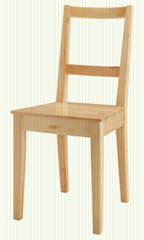The basic analogy used in most 3D software is that of a camera. Much like a photographer, a 3D artist has to have a fairly comprehensive knowledge of photographic theory. But, unlike a photographer, the artist must be able to create life-like computer models of everything visible in the scene. And one of the most challenging aspects of that is creating surface textures that mimic real-word materials. Faithfully recreating the way light is reflected, absorbed, scattered or transmitted by an object is what makes good computer generated (CG) imagery.
The best way for a CG artist to learn is to observe those qualities in photography. Even recreating photographic artifacts such as bokeh effects, depth of field and lens reflections can make computer generated images feel more authentic because people are used to seeing them in photography. In Tim’s Vermeer, I could see how Jenison came to many of his conclusions because CG artists train themselves to look for these specific qualities and artifacts in photography, and because of this he was able to see them in Vermeer’s work.
Advances in CG technology has skyrocketed since its early days. And even though it’s become much more commonplace, good CG is elusive because the viewer unaware they’re looking at a rendering and not at traditional photography. In a 2012 Wall Street Journal article, IKEA admitted that about 12% of the images in their catalog were computer generated. According to interview with CGSociety last June, the current 2015 catalog contains about 75% of shots showing and individual item are CG and 35% of room shots (such as kitchens) are completely CG. But why replace traditional photography with CG? It would seem that photographing a kitchen studio with all your product would be much simpler than building and texturing a complex 3D environment.
In reality, the logistics for a photo shoot can be really involved. Shots have to be planned, prototypes of new furniture need to be made and shipped to the photography studio where sets have to be assembled, and much of this takes place 10 months in advance to meet production and printing schedules.
 Now imagine that the manufacturer making the furniture runs into a glitch and cannot get a specific material for a sofa and they opt for an entirely different fabric. Now imagine this happens after all the photography has been shot. The sets have been torn down, the props and prototypes have been returned or discarded. The effort involved in reshooting would be significant. In the case of CG, this change would be incredibly easy by comparison.
Now imagine that the manufacturer making the furniture runs into a glitch and cannot get a specific material for a sofa and they opt for an entirely different fabric. Now imagine this happens after all the photography has been shot. The sets have been torn down, the props and prototypes have been returned or discarded. The effort involved in reshooting would be significant. In the case of CG, this change would be incredibly easy by comparison.
 In the beginning IKEA never planned to create elaborate rooms using CG. It started with a simple chair against a white background in their 2006 catalog. In a way, that was a test to see if anyone noticed. No one did. As the team became more adept at CG they gradually undertook more complex shots. There had been a tendency by upper management to disregard CG as being inferior. In 2009, the catalog team was told to cut back on the amount of CG, but when they asked which images were the most problematic, their critics actually pointed to images that were traditionally photographed, not the ones created using CG.
In the beginning IKEA never planned to create elaborate rooms using CG. It started with a simple chair against a white background in their 2006 catalog. In a way, that was a test to see if anyone noticed. No one did. As the team became more adept at CG they gradually undertook more complex shots. There had been a tendency by upper management to disregard CG as being inferior. In 2009, the catalog team was told to cut back on the amount of CG, but when they asked which images were the most problematic, their critics actually pointed to images that were traditionally photographed, not the ones created using CG.







